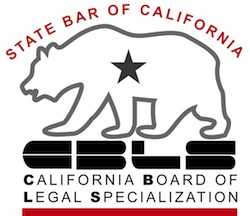You mean the tax liens won’t go away when I get a bankruptcy discharge? The client was startled that the lien would live on beyond his bankruptcy. So, if all my debt doesn’t go away, what do I get from the bankruptcy discharge? he asked. I thought the tax debt went away when I filed. […]
The Means Test: Badly Mangled
Another purported financial professional has confidently and conclusively gotten the bankruptcy means test absolutely dead wrong. And used that wrong conclusion to steer someone away from bankruptcy. Mt. St. Helens has nothing on me in terms of venting. How can financial professionals get this so wrong, more than a decade after the means test was enacted? Mangling the […]
Who Owns Your Business When You File Bankruptcy?
The bankruptcy trustee’s question was straightforward (if inartful) yet the business owner nearly blew the answer. The trustee asked: are you the sole owner of your business? When my client hesitated, she followed up: are you a sole proprietor? Focusing on the fact that he was the only person with an interest in the business, […]
Chapter 13 To The Rescue In Ruinous Business Lawsuit
Twice in the last six months, Chapter 13 bankruptcy has saved clients facing catastrophic lawsuits arising out of business. And because the targets of these lawsuits filed bankruptcy before they’d spent a fortune on lawyers and before the court had a chance to award huge damages, they fit beneath the Chapter 13 debt limits. We […]
Free Bankruptcy Advice: Consider The Source
Who gets their legal advice from their adversary? My client did. Get your legal advice from your adversary, your brother in law, or the internet and be prepared to get a surprise. Often, not a pleasant surprise. My client insisted that his tenant’s debt to him survived the tenant’s bankruptcy “because it was listed on Schedule […]
Old Tax Liability Discharged In Bankruptcy, If….
Discharging tax debt in bankruptcy gets lots of families out of a horrible hole. Tax debt can be large and swelled beyond the tax by interest and penalties. Collection on old tax debt often compromises the ability to stay current on more recent years. Bankruptcy can save their bacon because taxes found on returns […]
The Foreclosure That Was Longer Than War & Peace
How much time til foreclosure? Foreclosure is coming. Whether by choice or circumstances, you know the bank will take the house. Should you start packing immediately? The way banks are currently operating, the answer is: not yet, not soon, not for a long time. For one of my clients, the answer to how long was well more than […]
Pay Off Credit Cards Without Interest And Be Debt Free
The sixtyish client sitting in my office couldn’t pay off his credit cards, even though he had assets worth 10 times his credit card debt. What could bankruptcy possibly do for someone who was solvent? His assets would be sold in a Chapter 7. Assets but little cash His problem was liquidity and an income […]
Silicon Valley Horror Story: The Business Credit Card That Bit
I’ve long said that there is no credit card for which a real, live human being isn’t liable. (That may be an exaggeration, but not by much.) And I’ve long worried about the prospects for success of business startups financed on credit cards. But I’ve never seen a departing employee of a start up stuck […]
The One Person You Must Tell About Your Bankruptcy
Most people who file bankruptcy don’t want anyone else to know. Some of my clients try to hide their break for financial freedom from friends and neighbors. Others are worried about their boss finding out. Occasionally, someone will try to keep it from their mate. But trying to hide his bankruptcy nearly cost one client […]










